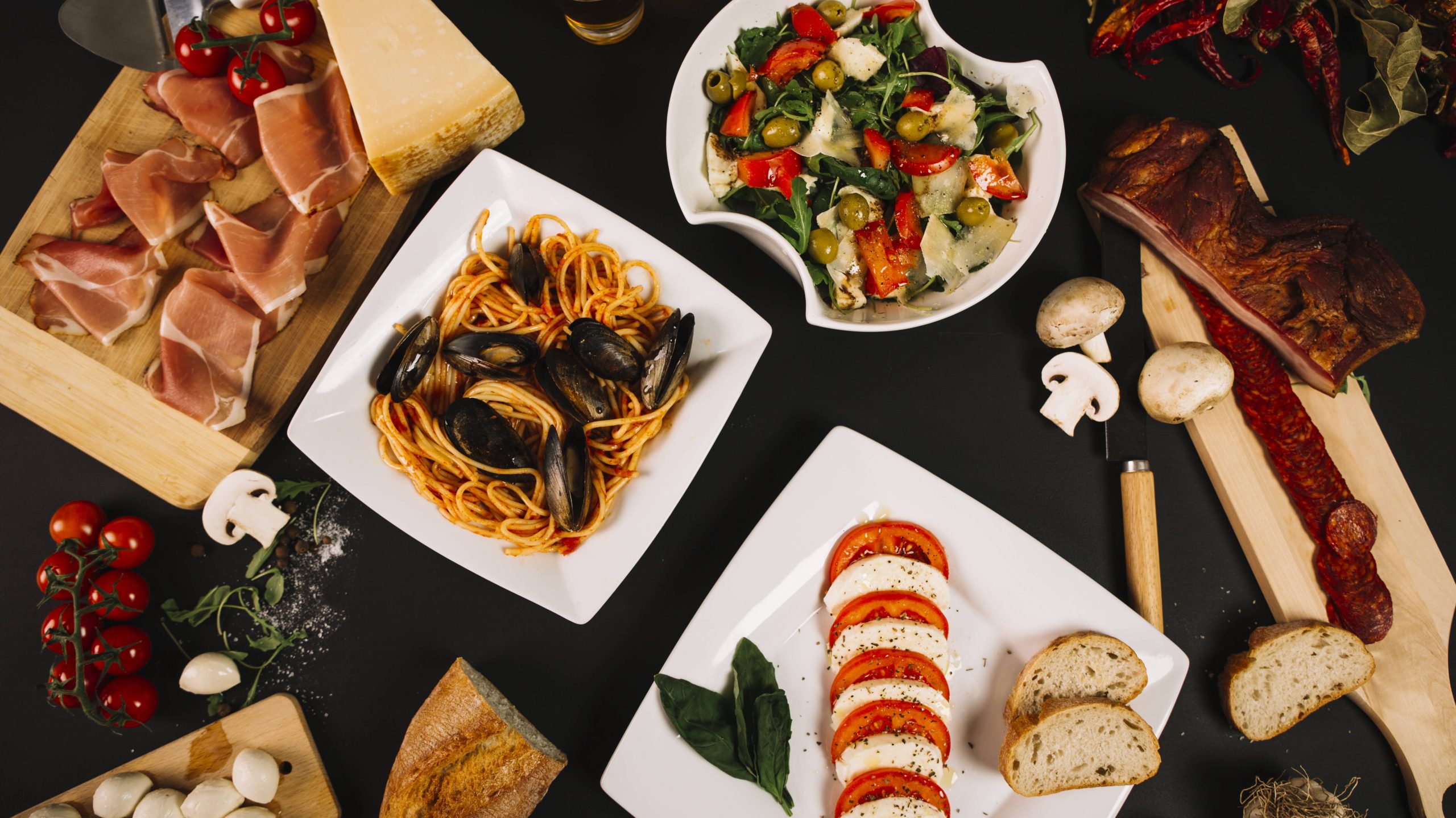One of the seven continents in the world- Europe, a home to more than 400 UNESCO heritage site that reflect their glorious past and a long history of human civilization. It offers a rich tapestry of history, culture and natural beauty. One of the main attractions that might capture ones eye when in Europe, is its delightful local cuisines. The cuisines of European countries are diverse in their very own way. Compared to traditional cooking of East Asia, meat holds a more prominent and substantial role in serving size.

You can find hundreds of varieties of cheese and other fermented milk products and not to forget the wheat flour bread that has long been the prestige starch. Other than bread another prominent item in their starch-diet has been potato. Salads are an integral part of European cuisine. Talking about Formal European dinners- are served in distinct courses. European presentation evolved from service à la française, or bringing multiple dishes to the table at once, into service à la russe, where dishes are presented sequentially.
Usually, cold, hot and savory, and sweet dishes are served strictly separately in this order, as hors d’oeuvre (appetizer) or soup, as entrée and main course, and as dessert. Dishes that are both sweet and savory were common earlier in Ancient Roman cuisine, but are today uncommon, with sweet dishes being served only as dessert. A service where the guests are free to take food by themselves is termed a buffet, and is usually restricted to parties or holidays.
In historical terms when we discuss about the cuisines of Europe and influences that has been bestowed upon present day diet, the major credits can be given to European royal and noble courts. Talking about the cutlery-The knife was the primary eating implement and eating steaks and other foods that require cutting followed. Most people who fell in the average population ate bread, flat cakes, or porridge made from rye, spelt, barley, and oats those better-off would also make pasta, dumplings and pastries. While the ones of the noble birth enjoyed the most royal delicacies.
Medieval times:
In these times a person’s diet was depending upon their social class. Cereal grains made up much of medieval person’s diet. But regardless of their social class, bread was common to both classes. It was taken as a lunch for the working man, and thick slices of it were used as plates called trenchers. People of the noble class had access to finely ground flours for their breads and other baked goods. Hunting was quite prominent at that time but was only accessed to the noble class and thus that would provide them with fresh meat. Spice was one of the main elements that made up their cuisine and is still a part of present day diet.
Common spices used were cinnamon, ginger, nutmeg, pepper, cumin, cloves, turmeric, anise, and saffron. Other ingredients used in dishes for the nobility and clergy included sugar, almonds and dried fruits like raisins.
Peasants would have likely been able to keep cows, and so would have access to milk, which then allowed them to make butter or cheese. When meat was eaten, it would have been beef, pork, or lamb. Commoners also ate a dish called pottage, a thick stew of vegetables, grains, and meat.
Early modern era:
In the early modern era, European cuisine saw an influx of new ingredients due to the Columbian Exchange, such as the potato, tomato, eggplant, chocolate, bell pepper, pumpkins, and other squash. Distilled spirits, along with tea, coffee, and chocolate were all popularized during this time.
Eastern European cuisine:
Eastern European food is based on grains and crops. The food in Eastern Europe is often made from barley, rye, wheat, millet, and buckwheat. Rye is still used today to made dark bread, which is especially common in Russia and the countries around it. Because Eastern Europe is surrounded by many lakes and bodies of water, fish is often used in East European recipes and dishes.
Few notable countries’ cuisine are-The food in Ukraine is loaded with history and has a wide array of dishes. Ukrainian foods are influenced by food from Germany, Turkey, Poland, Lithuania and Russia. The cuisine in the Czech Republic has been strongly influenced over time by the people in the surrounding areas. From the German people came sauerkraut, dumplings and roast goose. From Austria came schnitzels, which are breaded and fried pork or chicken patties.
Here were other foreign dishes that also came to Poland including Hungarian goulash, French pastries and Ukrainian borscht. These dishes have all become part of the tradition of Polish food.
Western European cuisine:
Western cuisine, which originated in France, started expanding after absorbing the flavors of several European nations, particularly Italy and Spain. This opened up a whole new world of culinary creations, including pasta, which is now a staple of Western cuisine.
Northern European cuisine:
The traditional northern European diet generally consists of a large serving of meat, poultry, or fish, accompanied by small side dishes of vegetables and starch. The traditional diet is high in protein, primarily from meat and dairy products. The diet tends to be low in whole grains, fruits, and vegetables. Not to forget the famous ‘English tea’.
Southern European cuisine:
The diet of southern Europeans differs from that of northern and eastern Europeans mainly due to the regions that influenced it. The ancient Greeks brought the olive tree to southern Europe, and Spain is now the world’s largest producer of olives. Chickpeas and fish stew were also introduced by the Greeks. Different adaptations of this fish stew are now popular dishes in France-boullabaisse and in Italy-zuppa di pesce alla marinara .
From tea to bread to potato, the rich food culture of the entire European continent has been highly influenced by its historical aspects which still prevail in the modern times.
Written by: Teeya | Edited by: Heta Dave



